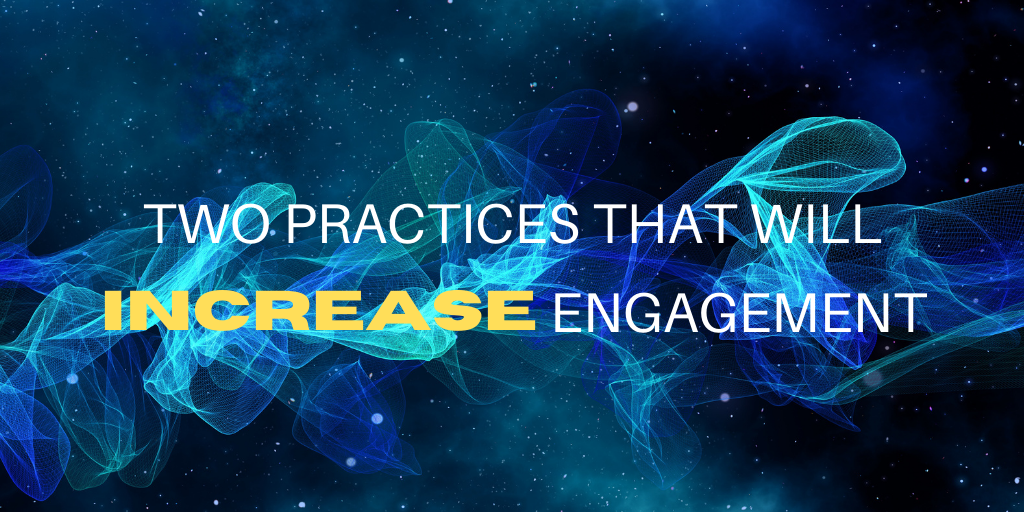TWO PRACTICES THAT WILL INCREASE ENGAGEMENT
 In 10 Practices You Need to Adopt Going Forward (post-COVID-19), I pointed out the obvious:
In 10 Practices You Need to Adopt Going Forward (post-COVID-19), I pointed out the obvious:
"As churches step into what's next, some are recognizing that the world changed in 2020 and preexisting engagement pathways were built for a time and place that no longer exists."
If you read that line and said, "Thank you Captain Obvious" you were not alone. 😉
But the truth of the statement cannot be overstated.
These are very different times, unprecedented will most likely be the word of 2020, and operating as if we will soon be back to normal is the new definition of insanity.
These are very different times, unprecedented will most likely be the word of 2020, and operating as if we will soon be back to normal is the new definition of insanity. Share on X
Now, Albert Einstein's old definition of insanity was pretty helpful. "The definition of insanity is doing the same thing again and again and expecting different results."
So let me suggest that if we want to succeed, to win in the days ahead, we will need to adopt some new practices; practices that are developed to succeed in unprecedented times.
What we really need to do is climb out of the rut of precedent and routine and onto the trajectory that leads to the preferred future we've chosen.
What we really need to do is climb out of the rut of precedent and routine and onto the trajectory that leads to the preferred future we've chosen. Share on X
The Rut of Precedent and Routine (when it comes to engagement)
Pre-COVID-19 it was our practice to develop an annual small group calendar that offered a variety of upcoming opportunities to connect to a group. Theoretically, an unconnected person would never be further away than 60 days from a connecting opportunity. Our theory was most of the people who asked about how to join a group could be signed up for the next event and then would be fine waiting the few weeks prior to the event.
This was a time-tested practice developed over many years. Two key assumptions were built into our practice. First, we assumed a few weeks would not be too much of an issue since most unconnected people had never tried a group before. Second, we assumed a set critical mass was required for every connecting strategy (church-wide campaigns, life group connections, short-term on-campus experiences, and book clubs) and achieving critical mass would often require several weeks of weekend promotion to build.
Today, I want to suggest that in order to crawl out of the rut of precedent and routine we will need to adopt two practices that will increase engagement.
Two Practices that Will Increase Engagement
There are two practices that need to be adopted. And they need to be adopted very quickly, if not immediately.
The first practice is an increased frequency and the second is an elevated immediacy.
Increased Frequency (of engagement opportunities)
One of the characteristics of the new attendance patterns during the pandemic is that regular worship attendees attend less frequently and infrequent attendees attend even less frequently.
One of the characteristics of the new attendance patterns during the pandemic is that regular worship attendees attend less frequently and infrequent attendees attend even less frequently. Share on X
Again. Thank you Captain Obvious.
But this is an important characteristic to pay attention to if you want to crawl out of the rut of precedent and routine.
What can we do about it?
In order to combat the impact of less frequent attendance, it will pay off to increase the frequency of engagement opportunities.
For example, if your pattern was to host large connecting opportunities four times a year, increased frequency will call for an annual calendar with smaller connecting opportunities 8 (or even 12) times a year.
Or, if you held off starting new groups until you had critical mass who had expressed interest, you'll figure out how to start "temporary" groups with 6 people who will meet 4 to 6 times (with no commitment to meet further).
If engagement is the new attendance. we will all need to adjust the frequency of engagement opportunities.
Elevated Immediacy (of engagement first steps)
Immediacy: "The quality of bringing one into direct and instant involvement with something, giving rise to a sense of urgency or excitement."
We've all had the experience of talking with someone who mentions they'd like to join a group (or wish they had come to the most recent connecting opportunity).
And most of us, with diligent application of the "don't be a matchmaker" principle, have said something like, "Watch for the next Small Group Connection. Sign-up starts the first weekend in January."
Elevated Immediacy calls for a pivot.
While I still believe new groups offer the very best opportunity to connect unconnected people, in order to crawl out of the rut of precedent and routine we will need to adopt the practice of elevated immediacy.
When we hear someone say, "I wish I had come to the connection" or when someone texts FRIENDS to 94090, they're hoping for immediacy. And when we respond with immediacy, bringing them into "direct and instant involvement with something," it will increase engagement. And engagement is the new attendance.
Further Reading:
Engagement Is the New Attendance
Planning Connecting Opportunities? Think Digital First
Make Belonging the Centerpiece of Your Engagement Strategy
Note: If you haven't read 10 Practices You Need to Adopt Going Forward (post-Covid-19), subscribe below and I'll send you a free copy.

